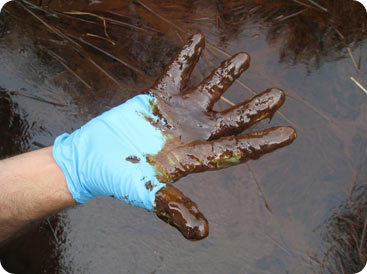By the time engineers capped the Deepwater Horizon oil spill in July of 2010, it had gushed almost five million barrels of oil into the Gulf of Mexico. Some of the effects were obvious, but others were less obvious.
Finding and studying them required a quick response. Within weeks of the spill, for example, a research team discovered a plume of oil beneath the surface that was 10 miles long and hundreds of feet thick. Later, another team found that a patch of coral a few miles from the well was dead or dying.
 Some effects of the oil spill were obvious. Credit: Office of the Governor of the State of Louisiana
Some effects of the oil spill were obvious. Credit: Office of the Governor of the State of LouisianaAnd a research cruise by scientists from The University of Texas and Michigan State University found that surface conditions changed rapidly once the well was capped, thanks to the work of tiny bacteria.
The researchers sampled surface water at several spots off Louisiana in May and again in August. In some spots oil was visible, but in others it was not.
Laboratory analyses showed that levels of alkanes — chemical components of the spilled oil — were ten times higher in May than in August, even where no oil was visible. At one spot where there was oil in May, the water also contained unusually high levels of amino acids. Since fast-growing bacteria can release those chemicals, the analyses indicated that bacteria played an important role in the quick disappearance of alkanes after the well was capped.
One concern, though, is that the fast-growing bacteria might remove oxygen from the water and kill the animals that live there. It’s complicated…

